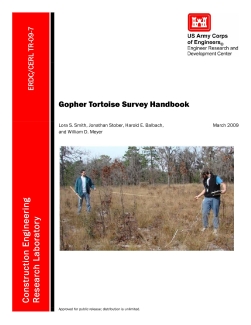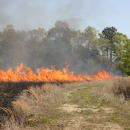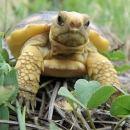
The gopher tortoise (Gopherus polyphemus) has some legal
protection, Federal or state, in all of the states where they occur. Threats to
the species vary regionally, and it is often desirable to determine in a
statistically acceptable manner whether tortoise populations are being
maintained or are declining. There is currently no reliable information on
the status and trends of populations across the range, although most
studies appear to show that declines are almost universal. Gopher tortoise
surveys may be conducted for different purposes, e.g., detection of tortoise
presence; estimating population size, density, and trends; and temporal
monitoring to assess effects of habitat management or restoration. A
survey’s specific objectives determine its timing and method. Survey and
population monitoring methods have not been standardized. This makes it
difficult to establish reliable gopher tortoise population information
because it is not possible to reliably compare reports among different
studies. This handbook outlines standardized methods for gopher tortoise
surveys, and suggests which methodologies are best applied to each type of
need and habitat setting. The conclusion is that Line Transect Distance
Sampling is the most statistically reliable when accurate measurement of
tortoise population numbers is needed.
| Attachment | Size |
|---|---|
| Gopher Tortoise Survey Handbook.pdf2.85 MB | 2.85 MB |


